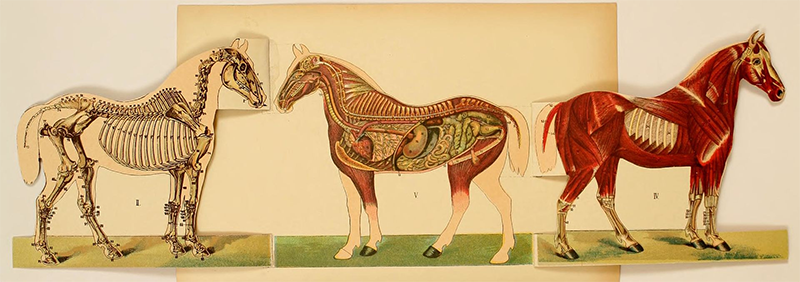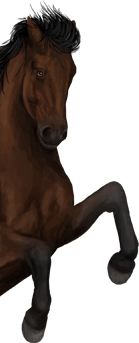This blog post was written by: HolyCow
Humans and horses don't look alike on the outside, that's obvious. Yet: on the inside, they are quite similar. Many muscles, bones and organs may have a different shape, but are still somewhat in the same place and work more or less the same way. Yet there are also very clear differences between horses, other animals and humans.
1. A horse does not have a collarbone
Most horse people fortunately know this. It has almost become a running joke by now: ‘You come across a horse with a broken collarbone, what do you do?’ ‘Call the museum, of course!’
In horses, only little remains of the collarbone: only a piece of connective tissue reminds us that this is the place where a collarbone normally sits.
2. A horse also doesn't have a gallbladder
Whereas in other animals bile is stored in the gallbladder, in a horse it runs directly into the digestive tract. This is not a problem: the function of bile is mainly to break down fat. The gallbladder ensures that in the event of a large fatty meal, a lot of bile can be released quickly. However, a horse eats several times throughout the day, and often eats a limited amount of fat. So it is not necessary to give a large amount of bile to the digestive system in a short time, but a constant flow of a small amount of bile is helpful!
3. Horses have lots of tendons
Okay, most animals also have lots of tendons. I'll admit. But in horses, they are enormously obvious, big and important! These tendons are what make horses so athletic and able to run fast from predators. From the front knee and hock, the horse actually has no muscles, only tendons and ligaments.
The most important tendons, where unfortunately you also hear about injuries most often, are the suspensory ligament, the superficial flexor and the deep flexor. In addition, there is another important ligament between the deep flexor and the bone of the lower leg: the check ligament
4. Horses can sleep while standing due to their ‘stay apparatus’
The equine stay apparatus is a fairly complex collaboration of muscles, joints and tendons. As a result, a horse needs little energy to keep their legs straight, despite horses being very large and thus putting a lot of weight on their legs. A horse can thus even keep one leg at rest, and with little effort pick up the weight on the other legs
One example of a part of the stay apparatus is a mechanism that locks the knee in the hind legs, so to speak. In addition, the legs are assembled in such a way that certain joints can only bend or stretch together. This keeps the legs stretched easily, allowing the horse to rest standing.
5. The caecum in horses is HUGE
Whereas the appendix in humans is quite small, in horses it is really big. Most of the abdomen on the right side is occupied by the caecum. It is therefore very important in horses! This is because it contains lots of bacteria that help the horse digest its food.
The appendix, which in humans is notorious for causing appendicitis, is absent in horses.
 Source: Earley Vernon Wilcox & Clarence Beaman Smith @ wikimedia commons
Thumbnail Source (Skeleton): Wilfredor @ wikimedia commons
Source: Earley Vernon Wilcox & Clarence Beaman Smith @ wikimedia commons
Thumbnail Source (Skeleton): Wilfredor @ wikimedia commons


 SynSedai
says:
SynSedai
says:
